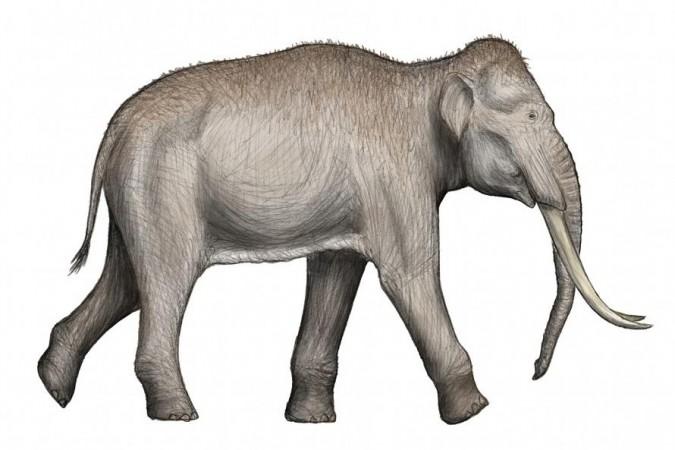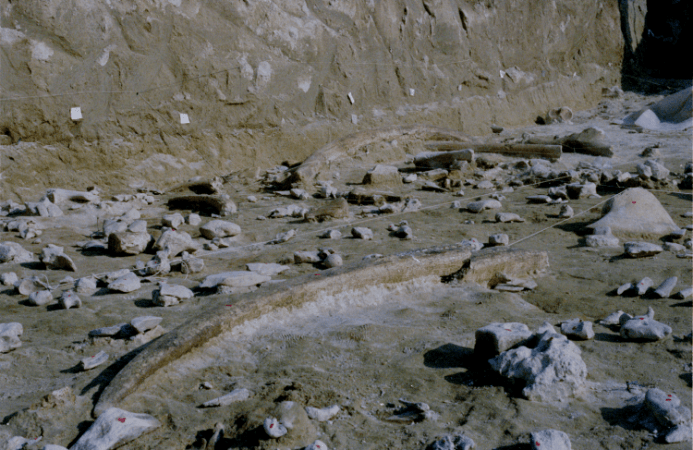The discovery of fire and the use of tools are perhaps two of the most important innovations that drove the evolution of ancient humans to become what we are today. Excavations and recovery of remains have taught us much about our ancient ancestors. However, there are secrets that are yet to be revealed. Echoing the notion, a new study has reported the unearthing of a variety of tools crafted from elephant bones around 400,000 years ago by archaic humans in Italy.
According to an international team of researchers, the tools were excavated from a site in Castel di Guido, Italy, where a large number of elephants had perished. Interestingly, it was learnt that tools found among the remains had been created by the hominids in the area from elephant bones to produce an uncommon range of tools; some of which were so sophisticated that they would not become common until 100,000 years later.
These learnings offer new insight into how ancients fashioned tools for specific purposes. "We see other sites with bone tools at this time. But there isn't this variety of well-defined shapes," said Dr. Paola Villa, corresponding author of the study, in a statement. The research was published in the journal PLOS ONE.
An Abundance of Elephant Remains

The site where the authors made the discovery is located at Castel di Guido, a village around 24 km from modern-day Rome. Several thousand years ago, a gully formed by a temporary stream flowed through the area. Large 13-ft-tall species of elephants known as straight-tusked elephants (Palaeoloxodon antiquus) flocked to the watering hole, and occasionally, some died around it.
Now extinct, these elephants inhabited Western Asia and Europe during the Middle and Late Pleistocene (781,000–30,000 years ago). The team noted that the remains of these dead elephants were utilized efficiently by the hominids living at the site on and off for several years. According to the researchers, the Stone Age hominids produced the tools using a standard and systematic approach; much like an assembly line.

"At Castel di Guido, humans were breaking the long bones of the elephants in a standardized manner and producing standardized blanks to make bone tools. This kind of aptitude didn't become common until much later," noted Dr. Villa.
Potential Neanderthal Link
Approximately 400,000 years ago, Neanderthals (Homo neanderthalensis)—an extinct subspecies of archaic humans—had begun emerging in Europe. Dr. Villa opined that it is likely that the residents of the Castel di Guido were Neanderthals. Therefore, these ingenuine accomplishments occurred at an important time of hominid evolution in general.
"About 400,000 years ago, you start to see the habitual use of fire, and it's the beginning of the Neanderthal lineage. This is a very important period for Castel di Guido," stated Dr. Villa highlighting its significance. This period may have been a fruitful one as well.

Through their research, the team identified 98 bone tools from remains excavated between 1979 to 1991 at Castel di Guido. According to them, these findings constitute the largest number of flaked bone tools produced by pre-modern hominids that have been reported so far. The 'toolbox' contained a broad range of useful tools. Some were pointed and may have been used to cut meat.
While others were wedge-like, probably used for splitting long and heavy bones such as elephant femurs. "First you make a groove where you can insert these heavy pieces that have a cutting edge. Then you hammer it, and at some point, the bone will break," explained Dr. Villa.
Sophisticated for Their Time
Among the collection of tools, one grabbed the attention of the archaeologists the most. They uncovered a single tool that had been carved from the bone of wild cattle. One of its ends was long and smooth. According to the researchers, it resembled a tool known as a "lissoir," or a smoother—a kind of implement that humanoids often used for treating leather.

What makes this particular finding special? Lissoir tools did not become prevalent until around 300,000 ago. "At other sites 400,000 years ago, people were just using whatever bone fragments they had available," said Dr. Villa. Despite these fascinating discoveries, she does not believe that the intelligence of the hominids from Castel di Guido was higher than that of those living in other parts of Europe.
It is likely that these archaic humans merely made use of the resources that were lying around them. Dr. Villa illustrated that this part of Italy does not possess naturally occurring large chunks of flint abundantly. Therefore, these ancient humans could not carve large stone tools. The region, however, may have had a large number of elephant carcasses. Straight-tusked elephants in Europe gradually disappeared with the progression of the Stone Age.
Nevertheless, during the time of the bone-crafters of Castel di Guido, these pachyderms frequented the water source at the site and succumbed to natural causes while there. The ancient humans came across the remains and opened them up to obtain their long bones. "The Castel di Guido people had cognitive intellects that allowed them to produce complex bone technology. At other assemblages, there were enough bones for people to make a few pieces, but not enough to begin a standardized and systematic production of bone tools," concluded Dr. Villa.














